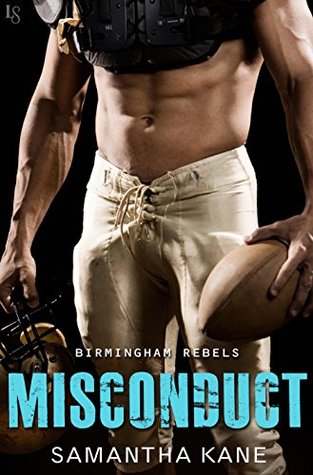 As 2017 draws to a close, I have been planning a reading list for next year. Some of the books on that list have been on my list for a while, and others are making a new appearance based on recommendations from others or books I came into contact with through another book I read this year. I always find it helpful to get recommendations from others, and I even intentionally solicited some from colleagues at College of the Ozarks who teach in different disciplines than my own. (Note: one of my goals for next year is to read more books in disciplines other than my own, which is biblical and theological studies).
As 2017 draws to a close, I have been planning a reading list for next year. Some of the books on that list have been on my list for a while, and others are making a new appearance based on recommendations from others or books I came into contact with through another book I read this year. I always find it helpful to get recommendations from others, and I even intentionally solicited some from colleagues at College of the Ozarks who teach in different disciplines than my own. (Note: one of my goals for next year is to read more books in disciplines other than my own, which is biblical and theological studies).
So as 2017 comes to a close, I want to give a brief Top 5 from the books I read this year. Since my goal this year was to read less so I could write more, most of my choices come from my own discipline. Perhaps readers will find this helpful, but the practice of reflecting on what I read this year is helpful for me, so here is my 2017 Top 5 whether anyone reads it or not.
Top 5 #5: The World Enfleshed by Oliver Crisp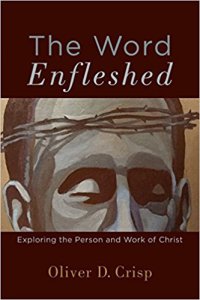 Crisp’s work, The Word Enfleshed, is an excellent example of analytical and historical theology utilized in conjunction for theological insight and clarity. Although not agreeing with all of his claims (nor honestly fully understanding some of them), he nonetheless provides well-articulated and well-defended propositions throughout. Of particular help is the scope of this book and yet its relative brevity. In nine chapters spanning less than 180 pages, Crisp tackles eternal generation, desiderata and proposals for the hypostatic union, a unique yet historically rooted argument for the atonement, and more. My favorite argument is his claim that when God created us in the image of God, He created us in the image of Christ. This is an excellent work and worth the read for those interested in philosophical and theological issues of the hypostatic union.
Crisp’s work, The Word Enfleshed, is an excellent example of analytical and historical theology utilized in conjunction for theological insight and clarity. Although not agreeing with all of his claims (nor honestly fully understanding some of them), he nonetheless provides well-articulated and well-defended propositions throughout. Of particular help is the scope of this book and yet its relative brevity. In nine chapters spanning less than 180 pages, Crisp tackles eternal generation, desiderata and proposals for the hypostatic union, a unique yet historically rooted argument for the atonement, and more. My favorite argument is his claim that when God created us in the image of God, He created us in the image of Christ. This is an excellent work and worth the read for those interested in philosophical and theological issues of the hypostatic union.
 In Culture Care, Fujimura sets forth a vision for a different kind of cultural engagement for Christians. Instead of winning a culture war, Fujimura suggests that we are agents of culture care, stewards of the culture, and those who make contributions to the culture. Fujimura, an accomplished artist and director of the Brehm Center at Fuller Theological Seminary, particularly focuses on culture care from an artistic perspective, though he has excellent insight and application for non-artists as well. One of the more helpful discussions relates to what Fujimura calls mearcstapas, border stalkers, who dwell on the outskirts of Christian society but are making inroads into the culture. He says that mearcstapa is not a comfortable position, “but mearcstapa can be a role of cultural leadership in a new mode, serving functions including empathy, memory, warning, guidance, mediation, and reconciliation. Those who journey to the borders of their group and beyond will encounter new vistas and knowledge that can enrich the group.” I was so impressed by this book that I will be using it with my BSU leadership team next spring.
In Culture Care, Fujimura sets forth a vision for a different kind of cultural engagement for Christians. Instead of winning a culture war, Fujimura suggests that we are agents of culture care, stewards of the culture, and those who make contributions to the culture. Fujimura, an accomplished artist and director of the Brehm Center at Fuller Theological Seminary, particularly focuses on culture care from an artistic perspective, though he has excellent insight and application for non-artists as well. One of the more helpful discussions relates to what Fujimura calls mearcstapas, border stalkers, who dwell on the outskirts of Christian society but are making inroads into the culture. He says that mearcstapa is not a comfortable position, “but mearcstapa can be a role of cultural leadership in a new mode, serving functions including empathy, memory, warning, guidance, mediation, and reconciliation. Those who journey to the borders of their group and beyond will encounter new vistas and knowledge that can enrich the group.” I was so impressed by this book that I will be using it with my BSU leadership team next spring.
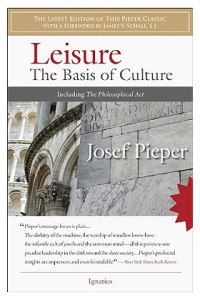 This edition of Pieper’s work includes both Leisure: The Basis of Culture and The Philosophical Act. These two collections of essays, although not written as a single book, nonetheless read well in a single volume as they have a good deal of overlap in theme and topic. Pieper’s basic premise is that the basis for culture is contemplation. One of the more direct statements of this thesis is his quotation of Aquinas when he writes “It is necessary for the perfection of human society that there should be men who devote their lives to contemplation.” In The Philosophical Act, Pieper extends this idea, suggesting that “the beginning of philosophy is wonder” (111). Pieper’s discussion of wondering at the world is closely related to his discussion of contemplation, thus the two parts work well together. I highly recommend this book.
This edition of Pieper’s work includes both Leisure: The Basis of Culture and The Philosophical Act. These two collections of essays, although not written as a single book, nonetheless read well in a single volume as they have a good deal of overlap in theme and topic. Pieper’s basic premise is that the basis for culture is contemplation. One of the more direct statements of this thesis is his quotation of Aquinas when he writes “It is necessary for the perfection of human society that there should be men who devote their lives to contemplation.” In The Philosophical Act, Pieper extends this idea, suggesting that “the beginning of philosophy is wonder” (111). Pieper’s discussion of wondering at the world is closely related to his discussion of contemplation, thus the two parts work well together. I highly recommend this book.
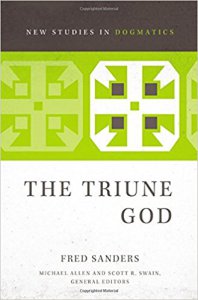 Sanders’ work is an excellent account of the issues involved in Trinitarian study, particularly with respect to methods of interpretation. Rather than proof-texting or forcing Trinitarian readings into texts, Sanders proposes that the Trinity is clearly revealed in the missions of the Son and the Spirit. In short, he argues that the temporal, external missions reveal eternal, internal processions. Although the entirety of the work does a great job of mixing biblical exegesis and scholarly study, probably the most helpful part of the book are his chapters on New Covenant Attestation and Old Covenant Adumbration. Both of these are rooted in good exegetical conversations and helpful insights into how readers ought to encounter the revealed Triune God in the text of Scripture. Although this series seeks to “fill the gap between introductory theology textbooks and advanced theological monographs,” several places in this book trend over into advanced theology. Apart from these few places, however, most students with an introductory theology can at least understand the central thrust of Sanders’ position and benefit greatly from his insight.
Sanders’ work is an excellent account of the issues involved in Trinitarian study, particularly with respect to methods of interpretation. Rather than proof-texting or forcing Trinitarian readings into texts, Sanders proposes that the Trinity is clearly revealed in the missions of the Son and the Spirit. In short, he argues that the temporal, external missions reveal eternal, internal processions. Although the entirety of the work does a great job of mixing biblical exegesis and scholarly study, probably the most helpful part of the book are his chapters on New Covenant Attestation and Old Covenant Adumbration. Both of these are rooted in good exegetical conversations and helpful insights into how readers ought to encounter the revealed Triune God in the text of Scripture. Although this series seeks to “fill the gap between introductory theology textbooks and advanced theological monographs,” several places in this book trend over into advanced theology. Apart from these few places, however, most students with an introductory theology can at least understand the central thrust of Sanders’ position and benefit greatly from his insight.
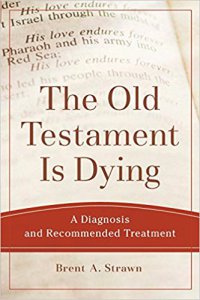 Strawn’s work compares the Old Testament to a language and explores the way languages pidgeonize, creolize, and ultimately die as an analogy for the hastening of the death of the Old Testament in Christianity. He argues that when the Old Testament, like a language, is no longer taught to children as a first language and begins to pidgeonize and creolize, it eventually leads to its death because it is not a native language to its speakers. The task of reviving the Old Testament is possible, he argues, but will require long and hard learning. This book will be difficult for those unfamiliar with language study, but it is a timely and much needed book. I gave a presentation at a conference utilizing much of his work and building upon some of his key points with more pointed application. You can read or view those at the hyperlinks.
Strawn’s work compares the Old Testament to a language and explores the way languages pidgeonize, creolize, and ultimately die as an analogy for the hastening of the death of the Old Testament in Christianity. He argues that when the Old Testament, like a language, is no longer taught to children as a first language and begins to pidgeonize and creolize, it eventually leads to its death because it is not a native language to its speakers. The task of reviving the Old Testament is possible, he argues, but will require long and hard learning. This book will be difficult for those unfamiliar with language study, but it is a timely and much needed book. I gave a presentation at a conference utilizing much of his work and building upon some of his key points with more pointed application. You can read or view those at the hyperlinks.
A few other honorable mentions in particular categories: A fiction book: Silence by Shusaku Endo
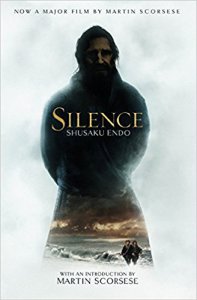 Endo’s Silence is a phenomenal work of historical fiction. Set in 17th century Japan, Silence tells the story of Sebastian Rodrigues, a Jesuit missionary priest who enters Japan with a fellow priest named Garrpe during the height of Japanese persecution of Christianity. Through both the 1st person letters of Rodrigues and through a 3rd person narrator, the reader is gripped by both the physical and psychological torture that threatened the Christian faith in the country. At the heart of the novel is a question that haunts Rodrigues: why does God remain silent in the face of evil? This is a gripping tale of faith and doubt, martyrdom and apostasy, and the nature of human and divine love. I highly recommend this work to those who love historical fiction and those who like novels that wrestle with tough questions about God. Note on the edition: I don’t typically enjoy movie tie-in editions, but I found Martin Scorsese’s foreword enlightening and worth the read. Also, the translator’s (William Johnston) historical introduction to the novel is a must-read, and I highly recommend doing so prior to the novel–though he gives a couple of “spoilers,” albeit small and predictable anyway.
Endo’s Silence is a phenomenal work of historical fiction. Set in 17th century Japan, Silence tells the story of Sebastian Rodrigues, a Jesuit missionary priest who enters Japan with a fellow priest named Garrpe during the height of Japanese persecution of Christianity. Through both the 1st person letters of Rodrigues and through a 3rd person narrator, the reader is gripped by both the physical and psychological torture that threatened the Christian faith in the country. At the heart of the novel is a question that haunts Rodrigues: why does God remain silent in the face of evil? This is a gripping tale of faith and doubt, martyrdom and apostasy, and the nature of human and divine love. I highly recommend this work to those who love historical fiction and those who like novels that wrestle with tough questions about God. Note on the edition: I don’t typically enjoy movie tie-in editions, but I found Martin Scorsese’s foreword enlightening and worth the read. Also, the translator’s (William Johnston) historical introduction to the novel is a must-read, and I highly recommend doing so prior to the novel–though he gives a couple of “spoilers,” albeit small and predictable anyway.
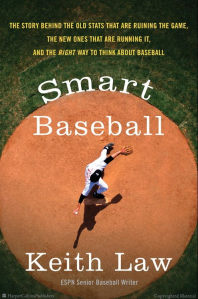 A good introduction to sabermetrics and how advanced statistics are changing the way teams view player acquisition and development. He makes a strong case against traditional statistics like pitcher wins and batting average and explains and defends well the aid that stats like Batting Runs, dRS (defensive runs saved), and constructs like WAR (wins above replacement) provide. Great for baseball fans. And if you are interested in education but not baseball, check out my article “Sabermetrics and Grades” and you may be interested in learning more.
A good introduction to sabermetrics and how advanced statistics are changing the way teams view player acquisition and development. He makes a strong case against traditional statistics like pitcher wins and batting average and explains and defends well the aid that stats like Batting Runs, dRS (defensive runs saved), and constructs like WAR (wins above replacement) provide. Great for baseball fans. And if you are interested in education but not baseball, check out my article “Sabermetrics and Grades” and you may be interested in learning more.
A book actually published in 2017: Sinai and the Saints by Jay Todd
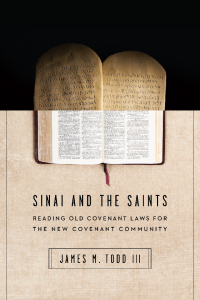 In Sinai and the Saints, Todd provides an excellent argument that Christians are not under the Old Covenant. In making this argument, however, Todd also succeeds in showing how this does not lead to antinomianism or a rejection of the Old Testament. In fact, Todd provides an excellent survey of the hope of the Pentateuch and its continuation in the prophets. In so doing he shows that the message of the Old Testament is one of God’s promised redemption and restoration through a king who is the offspring of Eve, Abraham, Judah, and David. Consequently, we live as Christians not under the Old Covenant but under the law of Christ. Another contribution of Todd’s work is demonstrating that although we are not under the Old Covenant law, we nonetheless must be familiar with the mountain of laws and the way in which it fits into the larger story of Scripture. This is a superb work that is accessible to college students but also rooted in top-level scholarship–in short, that is a difficult and admirable achievement.
In Sinai and the Saints, Todd provides an excellent argument that Christians are not under the Old Covenant. In making this argument, however, Todd also succeeds in showing how this does not lead to antinomianism or a rejection of the Old Testament. In fact, Todd provides an excellent survey of the hope of the Pentateuch and its continuation in the prophets. In so doing he shows that the message of the Old Testament is one of God’s promised redemption and restoration through a king who is the offspring of Eve, Abraham, Judah, and David. Consequently, we live as Christians not under the Old Covenant but under the law of Christ. Another contribution of Todd’s work is demonstrating that although we are not under the Old Covenant law, we nonetheless must be familiar with the mountain of laws and the way in which it fits into the larger story of Scripture. This is a superb work that is accessible to college students but also rooted in top-level scholarship–in short, that is a difficult and admirable achievement.
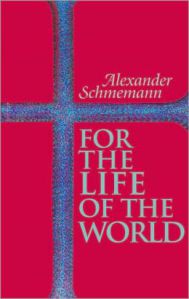 The second reading of this book is somehow much better than the first, even though I found myself deeply impacted by my first reading of it. Schmemann lays out how the liturgy of the church—in which he explores the Eucharist, baptism, marriage, and death—is the means by which we ascend into the presence of Christ to share in the kingdom and then come back with the reflected light of this kingdom, with its joy, and that this light and joy is first and foremost lived in the presence of and for the life of the world.
The second reading of this book is somehow much better than the first, even though I found myself deeply impacted by my first reading of it. Schmemann lays out how the liturgy of the church—in which he explores the Eucharist, baptism, marriage, and death—is the means by which we ascend into the presence of Christ to share in the kingdom and then come back with the reflected light of this kingdom, with its joy, and that this light and joy is first and foremost lived in the presence of and for the life of the world.
A book I read out loud this year: Phantastes by George MacDonald
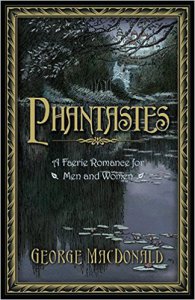 I really just needed a category to put this in. I read this book in May 2015 and enjoyed it. Then I read it out loud in class to my 12th grade British Literature students this fall and LOVED it! I couldn’t believe how much I enjoyed this book in comparison to the first reading. One article I read suggests that this book repays in the re-reading—and that’s certainly true! But I also think reading it out loud and with students made it a more communal journey. You can read about that here. Regardless, the book itself is (pardon the pun) fantastic! The book tells the story of Anodos and his journey in Fairy Land. By the end, the reader has also journeyed and changed through the experience. This is now in my top 5 all-time fiction books, slightly behind Till We Have Faces by C. S. Lewis and The Man Who Was Thursday by G. K. Chesterton.
I really just needed a category to put this in. I read this book in May 2015 and enjoyed it. Then I read it out loud in class to my 12th grade British Literature students this fall and LOVED it! I couldn’t believe how much I enjoyed this book in comparison to the first reading. One article I read suggests that this book repays in the re-reading—and that’s certainly true! But I also think reading it out loud and with students made it a more communal journey. You can read about that here. Regardless, the book itself is (pardon the pun) fantastic! The book tells the story of Anodos and his journey in Fairy Land. By the end, the reader has also journeyed and changed through the experience. This is now in my top 5 all-time fiction books, slightly behind Till We Have Faces by C. S. Lewis and The Man Who Was Thursday by G. K. Chesterton.
Okay, so if you’re still reading I guess this is a Top 10, not a Top 5. My apologies…I’ll try to do better next year!
Share this:


